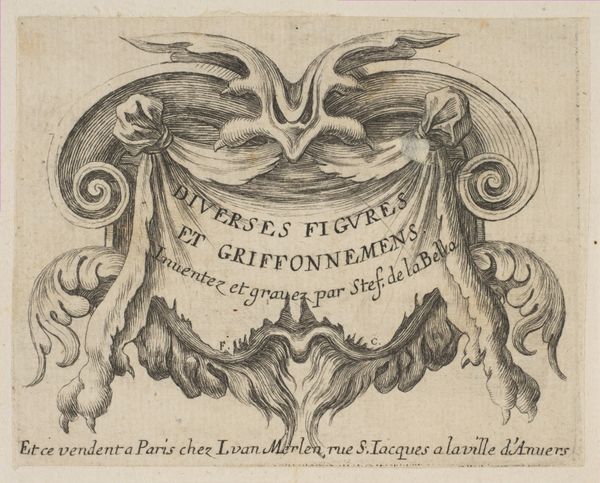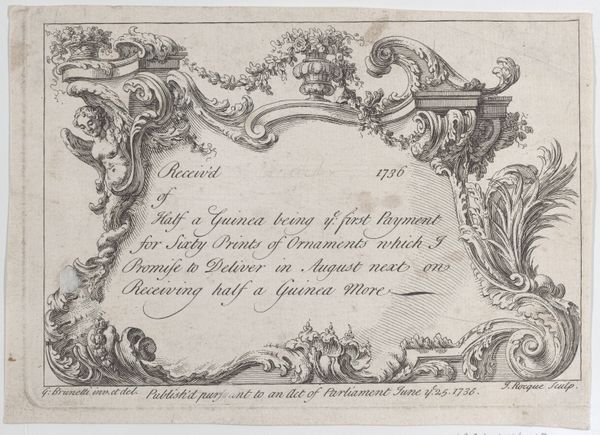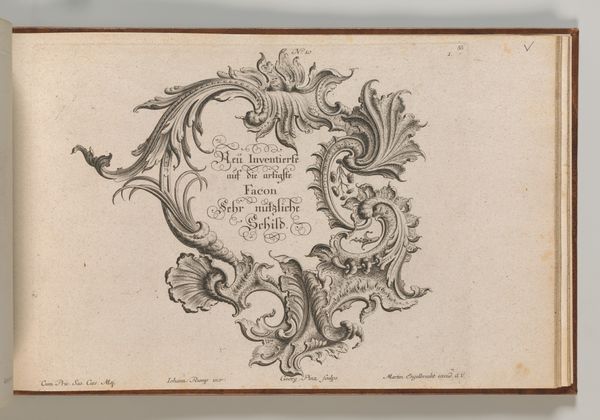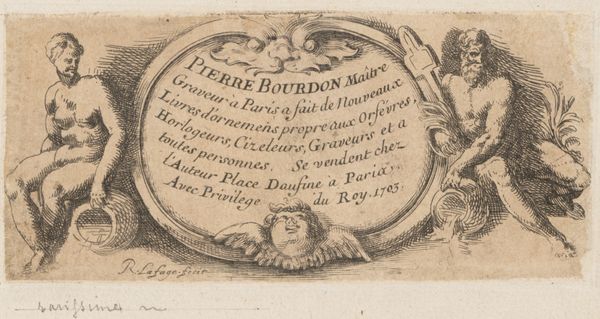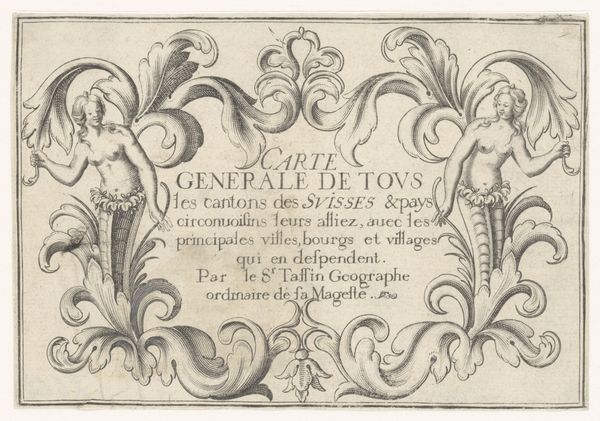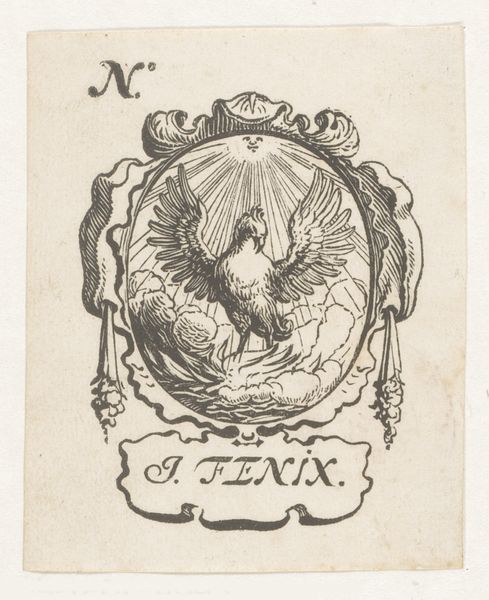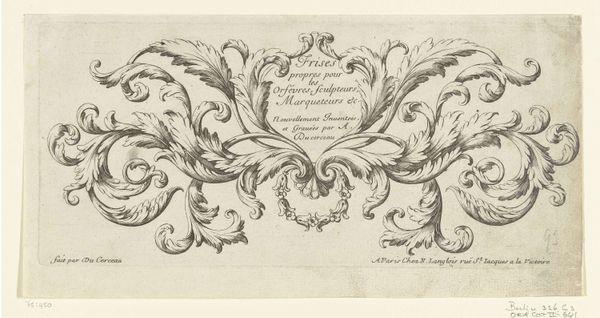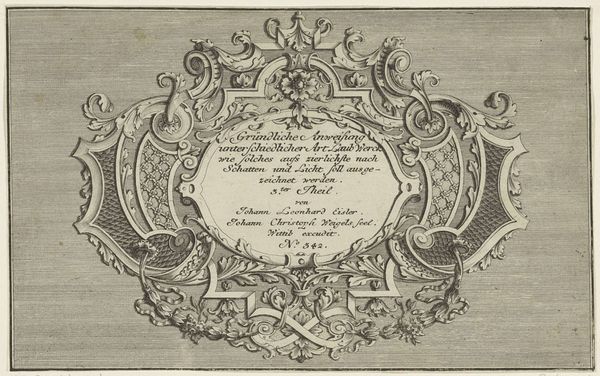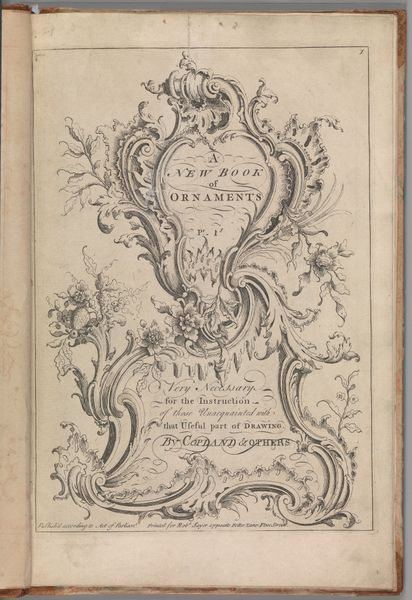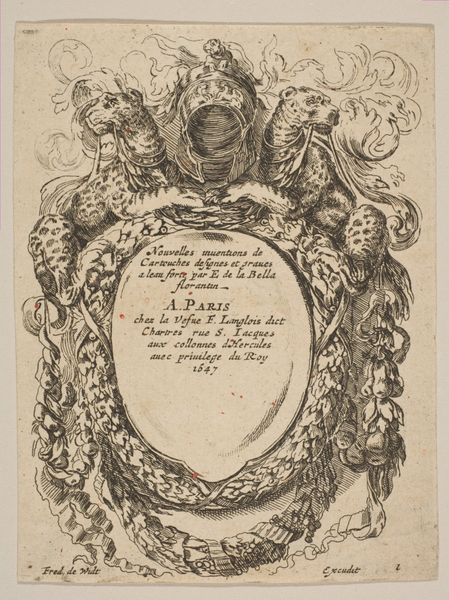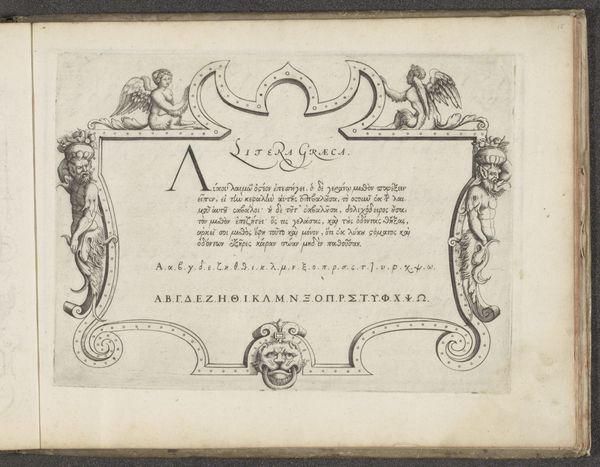
Title Plate with Two Satyr Heads, from Divers Masques 1630 - 1650
0:00
0:00
drawing, print, engraving
#
portrait
#
drawing
#
baroque
# print
#
engraving
Dimensions: Sheet: 2 9/16 × 3 3/8 in. (6.5 × 8.5 cm)
Copyright: Public Domain
Editor: This is the "Title Plate with Two Satyr Heads, from Divers Masques," an engraving by François Chauveau from between 1630 and 1650. The satyr heads feel really grotesque, but they also have this weird, captivating energy. What catches your eye in this piece? Curator: Those grotesque satyrs speak volumes. They aren't just decorative; they're visual shorthand. Satyrs, stemming from Greek mythology, traditionally represent the unrestrained aspects of human nature: lust, revelry, and a connection to the wild. Here, framing the title plate, they suggest that what follows—the "Divers Masques"—will explore similar themes, a realm of transgression and perhaps, social commentary veiled beneath entertainment. Does the baroque period give insight into why the satyr figure was so popular? Editor: That’s a good question! I’d always thought the Baroque was just about opulence and drama. But if the satyrs are supposed to symbolize base desires and things, I am very intrigued. Why would that be paired with a masque, something seemingly refined and sophisticated? Curator: Consider the function of a masque: performance, transformation, often a temporary inversion of social norms. The satyrs hint that the performance isn’t just for show; that there’s a deliberate engagement with the chaotic, darker impulses simmering beneath the surface of courtly life. Are the artists and audience members trying to exorcise some of these "baser instincts," or are they instead meant to be celebrated? Or is there some tension of both attraction and repulsion in these desires? Editor: I suppose they could be doing both. Showing it while also keeping it separate from day to day life in an almost ritualistic way. Now I’m seeing this plate as more than just an introduction; it's a guide to interpreting what comes next. It makes me want to look into Chauveau's other works, seeing how consistent this kind of symbolism is for him. Curator: Indeed, tracing the use of specific visual vocabularies can reveal a great deal about not just the artist, but the cultural anxieties and fascinations of their time. The satyrs are only the beginning.
Comments
No comments
Be the first to comment and join the conversation on the ultimate creative platform.
